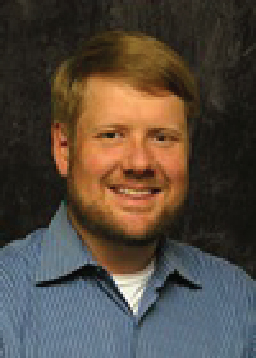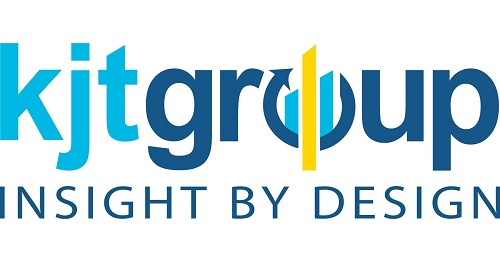The “Aging of America” is a demographic transition that we are all relatively familiar with. Its dramatic impact on the shape of our “population pyramid” cannot be understated; it is a shift never seen before throughout human history. Sound dramatic? Consider this fact: “People 65+ represented 12.4% of the population in the year 2000 but are expected to grow to be 19% of the population by 2030.” I would argue that it’s not all dramatic to consider what a fundamental shift this will bring in our way of thinking, about many aspects of lives, especially related to healthcare delivery.
To say that there is variation and a lack of true clarity as to unmet needs for these changes may be a huge understatement, and potential mistake for organizations tasked with meeting these needs. Described as a “tsunami” by some2, experts concede that we are wholly unprepared to deal with the impending demand for geriatric and long-term care. From ambulatory clinical staff, inpatient as well as assisted living and skilled nursing facilities, the demand will far outpace supply within the next 10 to 15 years.

An often overlooked aspect of this is the role of caregivers in the decision-making process. For many of the older patients, there is a great reliance on spouses, adult children, or others in the unpaid provision of care. Estimates for the prevalence of informal (unpaid) caregiving (proportion of those 18 and older who provide care to one or more adults) show that between 20% and 30% Americans are currently providing care, with wide variation by region and level of care provided. This is a large segment of the population, to say the least.
Over the past 15 years, I have worked with manufacturers and service providers in the healthcare markets, helping them to both generate and put into place insights about their constituents. I am often struck by how little attention is paid to the role of caregivers in decision-making processes. It is highly relevant and appropriate to understand the caregivers’ perspective on many aspects of patient care. Several ambulatory and inpatient therapy areas come to mind including oncology, nephrology, respiratory; just to name a few. As many older adults can simply not live independently at home, the role of the caregiver in facilitating transitions to either assisted living or long-term care facilities is crucially important.
In several of our own studies, we use caregivers as proxies for patients, with some patients unable to physically or mentally provide feedback about preferences, unmet needs, and desired outcomes. It is the caregiver, in fact, who is most important in these cases, as we distill patient preferences into their own, as the caregiver ultimately makes the decisions.
Thus, this special constituent class can be extremely important from a messaging and delivery perspective with regard to inpatient, ambulatory as well as home care services. But what do we know about them, how can we tap into what makes them tick, and how can we, especially in the service provision side leverage their influence to optimize the delivery and net impact of the health care we provide?

CAREGIVING POPULATION
Earlier this month (March 12, 2014), at the American Society of Aging Conference3, two of my colleagues
(Thomas Richardson, PhD and Jessica Spilman, MPH) shed light on this topic, with their presentation entitled
Caregiving in the USA. Leveraging the results of a study with more than 5,000 completed interviews, there are
some key statistics about the caregiving population that are especially important:
• More likely to be women
• Most often providing care to a parent
• They are the primary caregiver in about half of the cases
• Other children or grandchildren are also providing care in more than half of the cases
• Decision making: 31% say that they make the nal decision about health insurance
• More than half spent as much as $1,000 in caring for the adult in past year
• 83% do not receive caregiving support services
While only a top-level view of this population, a picture is being revealed. Their role is clearly important in the care decision-making process, and they not only spend time, but also money to provide that care.
For many organizations, this may already be part of their existing strategy considerations. An additional part of these strategic implications, often overlooked, is that not all caregivers (or consumers) are the same. This “segment” that we call “caregivers” are not really a single “picture.” They, like any other group, can be further segmented into homogenous and maximally different groups. Treating them all the same is not the optimal way to impart information, and drive behavior.
In developing appropriate offerings and messages to address the Aging of America, and to the degree that organizational budgets and strategies allow, caregivers, like all consumers, must be differentially defined and reached. Doing so will be the most cost-effective approach to “doing more with less” and put those organizations that do so in the best position to thrive in the future.
There is at least one additional trend and opportunity for organizations, especially, ACOs, IDNs, and others with vested interest in ensuring that there is efficient and optimized care planning and delivery that can transcend the caregiver market. There are substantial knowledge gap as to system navigation across caregivers. 
While some caregivers may not seek this kind of information, most certainly do, and the awareness of where to receive information is sorely lacking. By extension, we might expect the actual information to be lacking as well. A previous public opinion poll (2013) we conducted in New York State asked caregivers which agencies they were aware of that provided support to caregivers. We prompted respondents with the name of actual NY State and National agencies, as well as “made-up” or fake agency names, as a means to determine any biases in response (false positives, if you will). What we found is that the awareness levels of the actual state agency (New York State Office of Aging) was at only 19% and the fictitious agency name (“NY Cares A Lot”) was at 9%. This suggests that helpful information may not be known by 80% or more of caregivers. It also suggests that there is a massive opportunity to fill these gaps.
In summary, we all know that an aging population will spell big changes. As such, we should be cognizant that caregivers will be a big part of these changes, especially in the delivery of health care. Determining unmet needs and tailoring information and services to this constituent group is a major opportunity in the near term.























